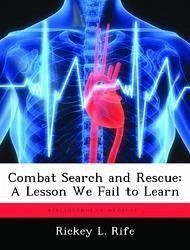Our National Military Strategy is based on rapid introduction of overwhelming combat power to achieve decisive results with minimum casualties. Air power is a key component of this strategy. To effectively employ air power requires an inherent capability be resident in the force structure which can conduct deep interdiction rescue operations to recover downed aircrews. Currently, Combat Search and Rescue is an individual service responsibility which fails to adequately support air campaign requirements, and as a consequence the warfighting CINC's operational objectives. Combat Search and Rescue is an emotional, often controversial issue with historical roots over fifty years old. From its inception in World War II through the current force structure capability, CSAR has been the victim of diminishing budgets, leadership apathy, and decreasing resources. Joint doctrine is flawed, there is duplication of effort resulting in wasted manpower and resources, no centralized direction, and little interoperability. Service parochialism also impedes attempts to resolve this critical problem. This paper examines historical lessons, joint doctrine, individual service doctrine, and the National Military Strategy. It then recommends an alternative solution which provides the theater CINC's with a robust CSAR capability.
Hinweis: Dieser Artikel kann nur an eine deutsche Lieferadresse ausgeliefert werden.
Hinweis: Dieser Artikel kann nur an eine deutsche Lieferadresse ausgeliefert werden.








